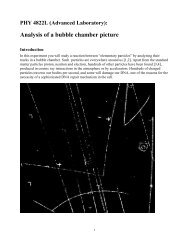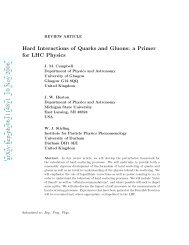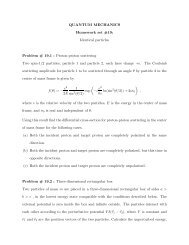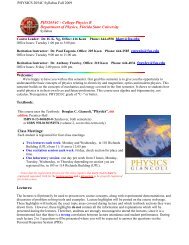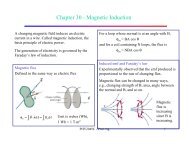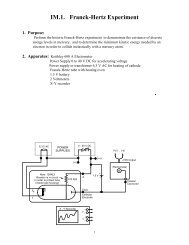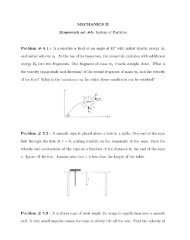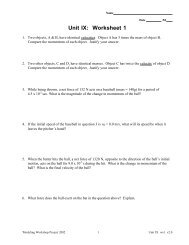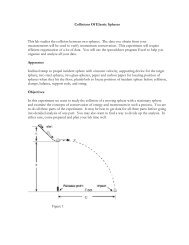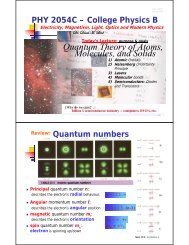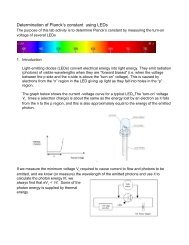Introduction to modern physics - FSU Physics Department
Introduction to modern physics - FSU Physics Department
Introduction to modern physics - FSU Physics Department
You also want an ePaper? Increase the reach of your titles
YUMPU automatically turns print PDFs into web optimized ePapers that Google loves.
Range of temperatures<br />
• Universe 5×10 −44 s after the Big Bang: T 1.4×10 32 K<br />
• core of hottest stars, 410 9 K; seems maximum now<br />
• hydrogen bomb ignites at , 410 7 K;<br />
• interior of Sun , 1.510 6 K;<br />
• plasma 10 5 K;<br />
• 10 5 K : clouds of a<strong>to</strong>ms, ions, e, occasional molecule;<br />
• 5800 K: surface of the Sun; 5000 K: cool spots at surface of the<br />
Sun; evidence for some molecules;<br />
• 3000 K: water steam: about 1/4 of water molecules ruptured in<strong>to</strong><br />
a<strong>to</strong>ms;<br />
• 2800 K: W light bulb filament;<br />
• 2000 K: molten lava;<br />
• 1520 o C: iron melts; 327 o C: lead melts;<br />
• 100 o C (373.15 K): water boils;<br />
• 252 K (-21.1 o C = 5.8 o F): temp. of salt-ice saltwater mix;<br />
• 234 K: mercury freezes; 194 K: dry ice freezes;<br />
• 77 K: nitrogen boils<br />
• 4 K: helium boils.<br />
• ;<br />
22



